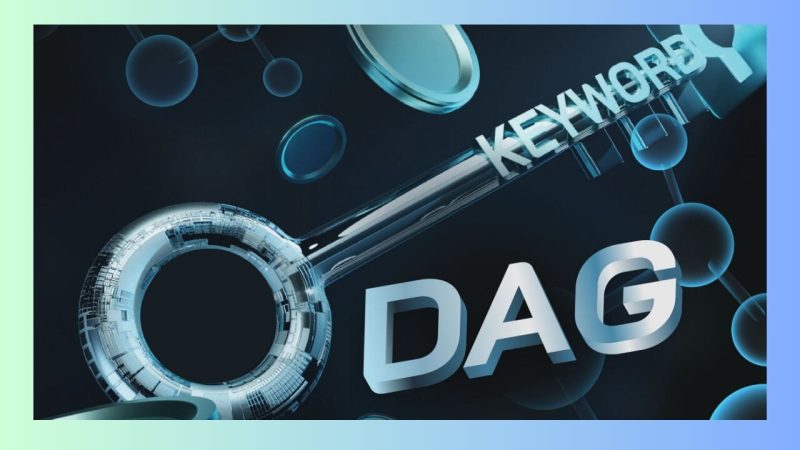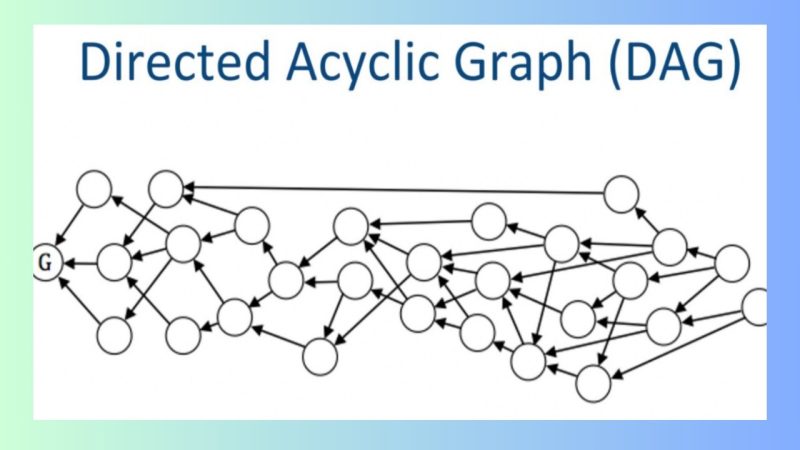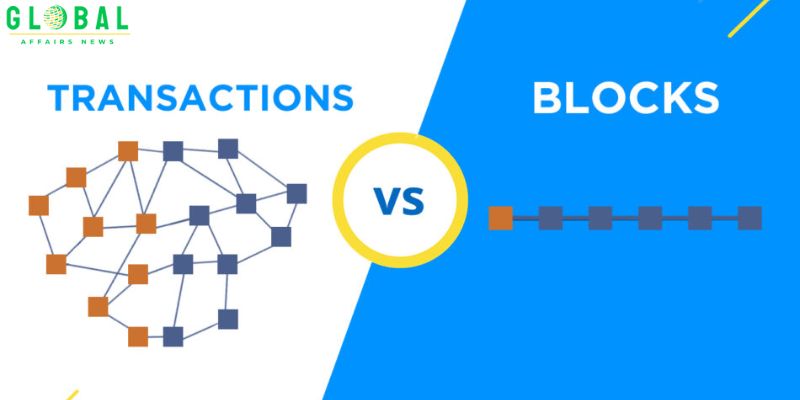What is DAG Blockchain? Directed Acyclic Graph (DAG) is a data structure that enables fast and efficient transaction processing without the need for blocks or transaction fees. Unlike traditional blockchain, DAG Blockchain allows transactions to be executed concurrently, enhancing scalability and reducing costs. In this article, we will explore DAG Blockchain in detail and discuss its main advantages and disadvantages.
What is DAG Blockchain?
DAG Blockchain is a unique data structure that uses a directed acyclic graph, distinguishing it significantly from traditional blockchain systems. While traditional blockchain stores transactions in blocks and links them in a chronological chain, DAG does not rely on distinct blocks. Instead, each transaction is directly linked to other transactions.
This means that DAG operates as a network where transactions are connected to one another, rather than following a continuous chain. Each transaction is verified by previous transactions, eliminating the need for block mining and enabling parallel transactions. This approach reduces congestion and enhances network performance since transactions can be verified quickly without waiting for new blocks to be created as in traditional blockchain systems.
DAG can be seen as an evolution of blockchain, especially for scenarios requiring large transaction volumes within short time frames. This is why DAG Blockchain is considered one of the promising solutions for cryptocurrency systems and decentralized technologies in the future.

Advantages of DAG Blockchain
One of the most significant advantages of DAG Blockchain is its superior scalability. While traditional blockchain systems like Bitcoin and Ethereum face congestion issues when too many transactions occur, DAG Blockchain can process transactions concurrently without such problems. This makes DAG an ideal solution for applications requiring high transaction volumes, such as cryptocurrency exchanges or large-scale payment systems.
Secondly, DAG helps reduce transaction costs. Since there is no need for miners to mine blocks as in traditional blockchains, transaction validation in DAG relies on distributed consensus from the network nodes. This minimizes costs and the time required for each transaction, making DAG a cost-effective solution for cryptocurrency applications.
Thirdly, DAG improves transaction speed. By eliminating the need to wait for new blocks to be created, transactions in DAG are processed immediately, providing a better user experience with fast and efficient processing.
Finally, the DAG system offers high security. Each transaction is verified by previous transactions, creating an automatic and reliable security system without the need for third-party intervention.
Disadvantages of DAG Blockchain
While DAG Blockchain offers numerous benefits, it is not without its challenges. One of the biggest issues is the complexity of processing and storing data. Since each transaction in DAG must verify several previous transactions, managing and storing data in a DAG network can be more complicated than in traditional blockchains.
Another disadvantage of DAG Blockchain is the potential for a 51% attack. Although the system does not rely on block mining, if an entity gains control of more than 50% of the computational power in the network, they could easily launch an attack and alter transaction history. This remains a potential threat for DAG systems.
Additionally, DAG Blockchain may encounter difficulties in synchronizing data across nodes in the network. As a DAG network expands, maintaining synchronization between transactions can face delays, especially as transaction volumes increase.

Applications of DAG Blockchain in Cryptocurrencies
IOTA is one of the pioneering applications of DAG Blockchain in the cryptocurrency space. Tangle, a form of DAG, is used in IOTA to validate transactions without the need for blocks or transaction fees. This model not only allows IOTA to process millions of transactions per second without congestion, but it also makes it an ideal platform for Internet of Things (IoT) applications, where quick and small transactions are critical.
Nano, another cryptocurrency platform, uses a block-lattice data structure, a special form of DAG, to allow transactions to be validated simultaneously without transaction fees. This enables Nano to process transactions quickly and without fees, making it well-suited for instant transactions and applications requiring high scalability.
U2U Chain is an emerging DAG Blockchain project aimed at addressing scalability and low transaction costs. U2U Chain leverages DAG technology to optimize transaction speed and efficiency, especially for cryptocurrency and decentralized finance applications. By using DAG, U2U Chain can handle millions of transactions in a short time without congestion, reducing transaction costs and enhancing the user experience.
Additionally, platforms like Hedera Hashgraph and Constellation also use DAG to optimize transaction processing in financial applications, big data, and IoT, expanding the capabilities of these decentralized networks.

Comparing DAG Blockchain with traditional Blockchain
Compared to traditional Blockchain, DAG Blockchain has several notable differences. While Blockchain uses consecutive blocks to store transactions, DAG allows transactions to link directly with each other without needing to wait for blocks. This helps DAG process transactions more quickly and reduces costs.
Furthermore, DAG Blockchain outperforms traditional Blockchain in scalability and transaction speed. While traditional Blockchain may face congestion and high transaction costs as the number of transactions increases, DAG can handle millions of transactions simultaneously without these issues.
In conclusion, this article has explained in detail “what is DAG Blockchain?”. DAG Blockchain is a promising technology with the potential to solve key issues faced by traditional blockchains, such as scalability and transaction costs. Although there are still challenges in processing and security, with continued technological development, DAG Blockchain could become a crucial solution in cryptocurrency and distributed systems in the future.
Be sure to keep following Global Affairs News for more useful information and insights every day.

